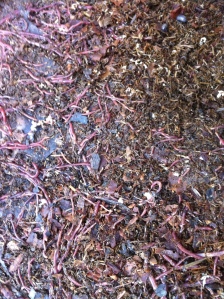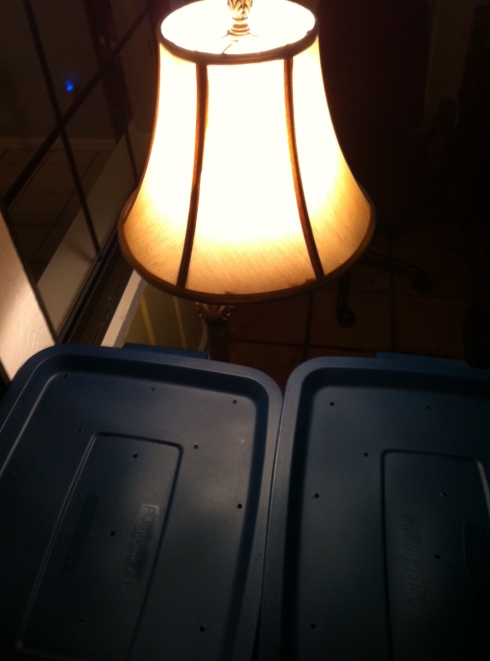If you will be in the San Antonio area May 2nd make plans to come join us.
Top 5 reasons why Texas Jumpers are my favorite worm
30 Oct1. Jumpers are easy to care for. They can be bin raised just like other species (red worm and European nightcrawler). The added advantage to these worms is that they can and do thrive in ground set ups like raised beds or planters.
2. Strength- These fellas can handle tougher soil types like clay and sand better than other worms. This strength makes them the only candidate most worm farmers would dare add directly to the garden.
3. They can take the heat. In Texas I have to keep my reds and euros cool in the summer and sometimes a shady spot just isn’t cool enough. They prefer the A/C and sometimes that is not an option. My Jumpers are mainly kept in raised beds in the shade. With temps over 100 degrees F throughout the summer, Jumpers continue to reproduce when other worms shut down.
4. Versatile- Their strength and tolerance to heat make them more suitable for hotter summers. Jumpers ability to be outside in raised beds or bins gives you the flexibility to try all sorts of set ups with greater success.
5. Performance- Over my years of raising Texas Jumpers they have endured through some cold winters (for Texas) and some hot/dry summers. Although the spring and fall can yield loads of eggs from the red worms and European nightcrawlers, the entire year production champion (in my experience) is the Jumper.
How to keep your nightcrawlers from “nightcrawling” out of your bin
4 MarWhen you start a new European nightcrawler bin, these little fellas will do just as their name suggests and night crawl all over the place. On several occasions I have woken up to worms out of the bin. There is a simple little trick you can use that will help them stay put. Place a lamp or light source above the bin at night and they will be good girls/boys and “stay”. After a few days, maybe a week or so they will get settled into their new home and be “trained” to stay put.
DIY Worm Trough
28 AprI had been thinking of building a feed trough style worm bed for some time. I found some plastic 55 gallon drums on Craigslist. My dad had some pine 2X4s cut from his saw mill, and we were in business. We began by cutting the 55 gallon plastic drums in half w/ a skill saw.
Materials: (2X4s, plastic 55 gallon drums, 3 inch wood screws, roofing screws, Thompson’s water seal)
Alabama Jumpers in Texas
28 MarI have been experimenting for a little over a year with the Alabama Jumper, sometimes referred to as the Georgia Jumper, or in this case Texas Jumper. The scientific name of which being Amynthas agrestis. Now that that’s out of the way, this Jumper isn’t even originally from Alabama? As a matter of fact, it is believed to hail from Asia. How about that? This aggressive and super strong worm can and will jump right out of your hand. This super strength makes it a powerful tunneler, and allows it to burrow through some of the hardest packed clay soil. This worm is a hot item, and is in high demand by gardeners everywhere for these reasons. European nightcrawlers, African nightcrawlers, and Red Worms, are all great, but the Alabama Jumper can go to work in clay and sand unlike the other varieties. I have experienced it’s power first hand, and been amazed at it’s strength and ability to work through some hard soil. In San Antonio, we’ve got some pretty tough clay, and I have seen these Jumpers perform mightily in it. I too have read all the hype about this worm, and it is the real deal. The Alabama Jumper is great for people that want a worm to go to work in their soil, garden, or flowerbeds. For composting, producing castings, or fishing I would recommend the others.
I have been trying various methods of raising the Alabama Jumper for over a year, and have had success with raising them in bins, as well as, worm beds or pits. They are reproducing in both environments, and I have a limited amount available for sale. Call for availability.















